Bees are a type of insect belonging to the order Hymenoptera. Bees include many different types of insects, such as bees, wasps, wasps, wasps, etc. Bee insects are generally social insects that live in colonies composed of a queen bee, worker bees, and drone bees. Bees are the most famous bee species. They mainly collect pollen and honey in their hives and build their nests with beeswax. Bees play a very important role and are an important link in the human food chain, responsible for pollination and spreading pollen. In addition, bees also produce honey from the bee's abdomen, which is widely used in the food and pharmaceutical industries. Unlike bees, bee-like insects such as wasps, wasps and hornets are more aggressive and sometimes attack humans, causing pain and allergic reactions. These wasp-like insects usually live in nests and feed on other insects or sweet foods. Overall, bee insects play an important role in natural ecosystems and also bring many benefits to humans. This article has compiled for you the ten most powerful species of bees in the world, including killer bees, hornet wasps, horn bees, Japanese hornets, mine bees, night wasps, golden-ringed wasps, black velvet wasps, and yellow-footed tiger bees. Let's take a look at how powerful these bees are.
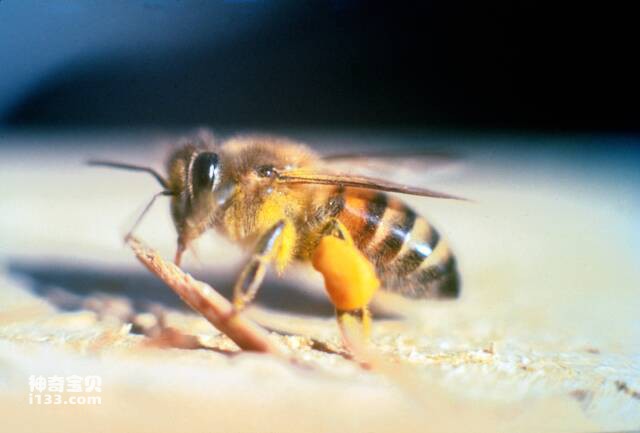
1. Killer bees (scientific name: Killer Bees)
Killer bees, also called African killer bees, are large, extremely aggressive social insects. They originated in Southeast Asia and have now spread to Japan, South Korea, China and the United States. Killer bee worker bees are about 2.5 centimeters long, have distinct black and yellow stripes, and have thick body hair. Their stingers are longer than ordinary bees and their venom is more potent, which can easily cause allergic reactions or even death after being attacked. Killer bees are highly aggressive insects that will send out warning signals and stage an attack if they feel threatened. Because their attack power is so powerful, they cause dozens or even hundreds of casualties every year. According to incomplete statistics, more than 1,000 people have died from killer bee stings. Therefore, people should be especially careful with this insect and call the police or seek professional help as soon as they find traces of it.

2. Killer wasp (scientific name: Vespa)
The hornet wasp is a large, aggressive social insect, also known as a drone or yellow-faced wasp. They are mainly distributed in temperate regions of North America and Europe, and are a relatively common species in the bee family. Hornet wasps usually have black and yellow stripes and are about 2.5 centimeters long. Female bees are slightly larger than male bees. Their venom is very potent and may attack humans if disturbed, causing severe allergic reactions and injuries. Hornets are highly aggressive insects and will send out warning signals and organize attacks if they feel threatened. Generally speaking, hornet wasp nests are built underground or in caves, so people need to be careful not to disturb them when digging underground, cleaning lawns, or taking walks. Hornet wasps play an important role in the environment, such as pollen transmission and fruit fruiting. However, due to their strong aggressiveness, people need to maintain safety awareness when coming into contact with hornets and do not interfere with them without authorization.
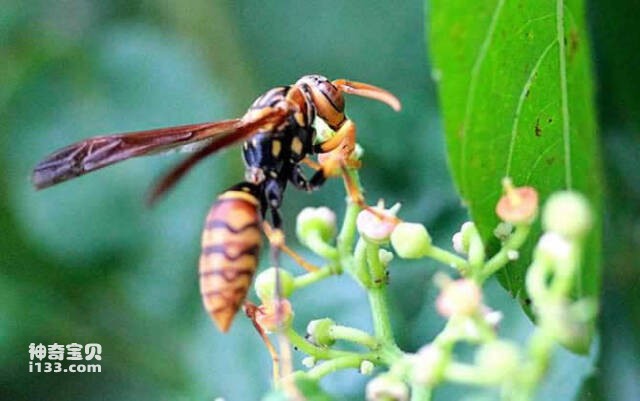
3. Horn Bee
Horn wasp is the common name for a type of larger horn bee, also known as big horn wasp, hornet, hornet, etc. It is named "horn wasp" because the antennae on its head look like horns, and it also has three poisonous needles on its abdomen. Named "Three Eyed Needle", horn bees are typical omnivorous bees. The toxicity of horn bees varies depending on the bee species, but overall they are basically highly venomous bees. The main components of the venom are histamine and bees. Toxin, bradykinin, hyaluronidase, etc. can cause hemolysis, bleeding and neurotoxicity. They can also cause allergic reactions. Severe stings can lead to death. The horn bee has a long historical record, and in its humanistic history, the horn bee is also an animal with great humanistic heritage.
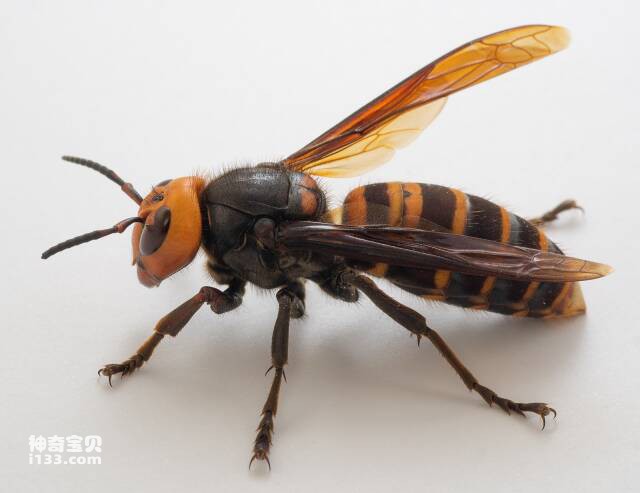
4. Japanese Hornet
The Japanese giant hornet, also known as the Asian giant hornet, is named Vespa mandarinia japonica in academic circles. It is one of the largest hornets in the world, with a body length of more than 5 cm. They are mainly distributed in Japan, China, the Korean Peninsula and Southeast Asia. The Japanese bumblebee is a highly aggressive insect that usually appears during the summer months. Their nests are usually built in tree holes or artificial environments, and there can be 500-1,000 worker bees in one nest. The venom of the Japanese giant hornet contains high concentrations of a variety of chemicals that can produce strong neurological, muscular and cardiovascular reactions in humans. Japanese giant hornets are very powerful, and large adults can kill hundreds of bees alone. When Japanese hornets attack humans, they can easily cause death due to their powerful attack power and venom. Therefore, once traces of Japanese hornet activity are discovered, timely measures must be taken to prevent and eliminate them to avoid harming humans and other insects.

5. Mine Bee
Mine bees are brown in color and 3-5 centimeters long. They are the largest species of bees. They are mostly found in mountainous, hilly and jungle areas in tropical areas such as Jiangxi, Guangdong and Hainan in my country. They often build hives underground. The honeycomb is in the shape of a pagoda, with layers on top of each other, ranging from half a meter to 2 meters in diameter. Mine bees make an intense buzzing sound when they fly. The reason why the mine bee has this unique name is because of its huge venom. If a person is stung by it, the wound will be bloody and bloody like being injured by a land mine. Within a few minutes, the person will feel black eyes and numb mouth and nose. , in less than half an hour, the wound will be unbearably painful, and the pain will often make people faint. The pain will last 7-10 hours. If you are bitten 2 or 3 times, your life will be in danger.
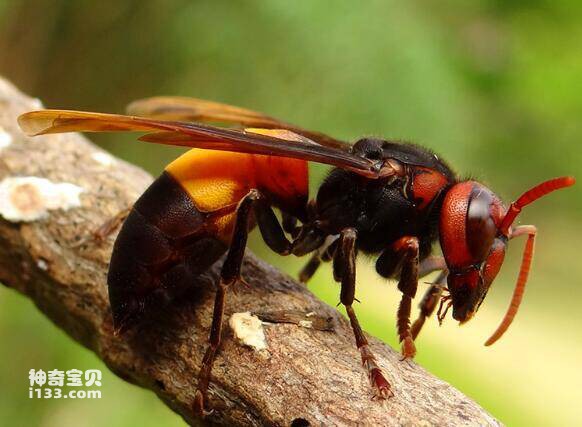
6. Cave Wasp
Night wasps are mainly found in temperate regions of North America and Europe. They usually live underground or in other deep caves, hence the name "cave wasps." The body of the worker wasp has black and yellow stripes and is about 1.5 centimeters long. Cave wasps are very aggressive and will attack if disturbed or feel threatened. Their venom is very potent and a sting can cause swelling, pain, allergic reactions and even death. Therefore, when going out for camping, traveling, camping and other activities, you need to be careful to avoid getting close to potential nests such as caves and bushes. Night wasps play an important ecological role in the environment, controlling the populations of many other insects, and they are also a food source for many animals. However, due to their aggressive nature, people need to be vigilant when coming into contact with night wasps and try to avoid disturbing them.
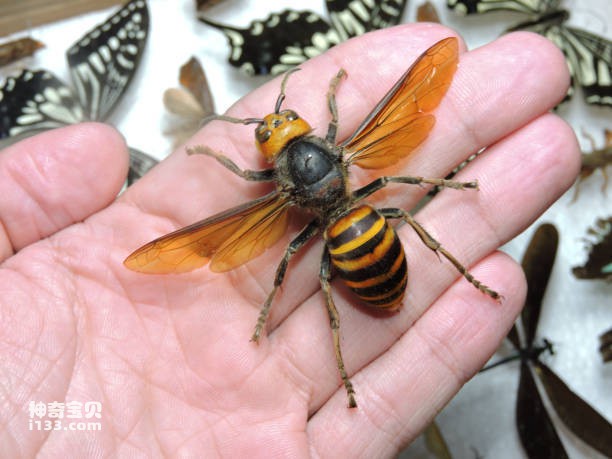
7. Golden-ringed Wasp
Vespa mandarinia (scientific name: Vespa mandarinia) is a large wasp, also known as the Asian giant hornet, Asian killer bee, etc. They are one of the largest wasps in the world, with a body length of more than 5 cm and a wingspan of 7 cm. Golden-ringed wasps are mainly distributed in East Asia, such as China, North Korea, Japan and other places. They often nest in branches, pits or caves and form large social groups. These social groups consist of a female "queen" and many worker bees, who are responsible for finding food and maintaining the nest. Golden-ringed wasps pose a greater threat to humans, especially when they feel their territory is threatened and will attack any creature, including humans, that comes close to their nests. Its venom contains potent neurotoxins that can cause severe pain, difficulty breathing and even death. Therefore, if you discover a nest of golden-ringed wasps, you should notify a professional bee exterminator team as soon as possible for removal.
8. Black Velvet Wasp
Vespa dybowski (scientific name: Vespa dybowskii) is a large wasp, also known as the black wasp. They are about 3 cm long, with black or dark brown bodies and yellow markings on their heads and chests. The black velvet wasp is mainly distributed in Northeast Asia, such as China, Japan, North Korea and other places. They often nest in tree holes and form large social groups. These social groups consist of a female "queen" and many worker bees, who are responsible for finding food and maintaining the nest. Although black velvet wasps are somewhat aggressive, they pose less of a threat to humans than golden-ringed wasps. Black velvet wasps are considered beneficial organisms because of their ability to control populations of other insects and are also an important pollinator. However, in some cases, such as when nests are built in residential areas or frequently frequent densely populated areas, precautions and safety measures still need to be taken to avoid unnecessary harm.
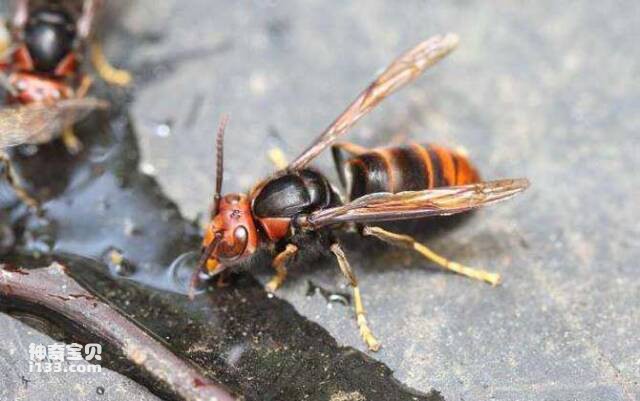
9. Yellow-footed Hornbill
The yellow-footed hornet is a larger wasp in the Vespididae family. It is also known as the ink-breasted wasp, yellow-footed wasp, red-tailed hornet, etc. The ink-breasted wasp is highly aggressive and is one of the most common dangerous species of wasps that attack humans. , there are also frequent reports of death from yellow-footed hornet attacks. Although the yellow-footed hornet is a lower species of hornet, it is also a highly venomous wasp. In addition, yellow-footed hornets have a strong instinct to protect their nests. As long as the swarm believes that its own safety is threatened, it will attack in groups and will pursue the intruders relentlessly. The ink-breasted wasp has a very wide prey range and is an omnivorous insect. The ink-breasted wasp is large, has strong flying power, and hunts ferociously. This bee is the natural enemy of many pests in agriculture, forestry and fruit industry. Its characteristics of hunting pests are both beneficial and harmful to humans. The advantage is that the adults can prey on a variety of pests in agriculture, forestry and fruit industry, and are important natural enemies; the wasp belongs to the wasp class, and in medicine, wasp adults, larvae and honeycombs can be used as medicine to treat diseases.
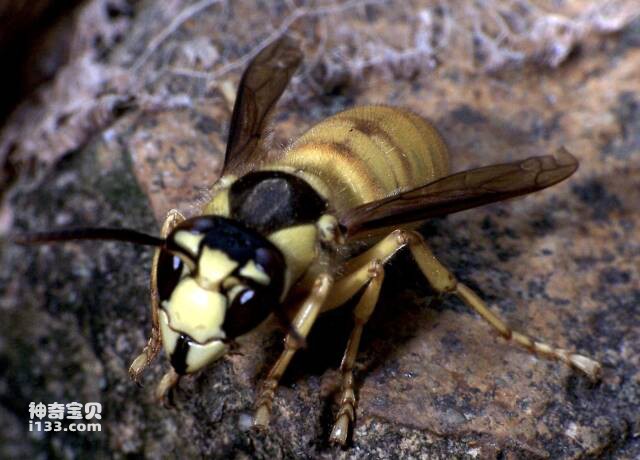
10. Black Shield Wasp
Vespa bicolor (scientific name: Vespa bicolor) is a large wasp, also known as the black and yellow wasp. They are about 3-4 cm long, with black or dark brown bodies, distinctive yellow markings on their heads and abdomen, and a pair of black "shields" on the back of their chests. Black-shielded wasps are mainly distributed in Asia, such as China, Japan, India, etc. They usually nest on tree trunks or in pits and form large social groups. These social groups consist of a female "queen" and many worker bees, who are responsible for finding food and maintaining the nest. The black shielded wasp is highly venomous and may cause severe pain if attacked.Pain and allergic reactions. Therefore, people should try to avoid getting close to their nests or disturbing their activities to avoid causing them to attack. At the same time, black-shielded wasps are also important natural enemy insects. They can help control the numbers of other pests and maintain ecological balance.
The top ten most toxic bees in the world are mainly compiled based on relevant similar websites. The toxicity, aggressiveness, etc. of the corresponding bees are comprehensively recommended and ranked. The ranking is for entertainment reference only. If you have any questions, please feel free to contact us at Comments/criticisms and corrections at the end.
animal tags:
We created this article in conjunction with AI technology, then made sure it was fact-checked and edited by a Animals Top editor.